Find Help
More Items From Ergsy search
-

The Leeds Specialist Rehabilitation Centre - 3 Prosthetic Physiotherapy
Relevance: 100%
-
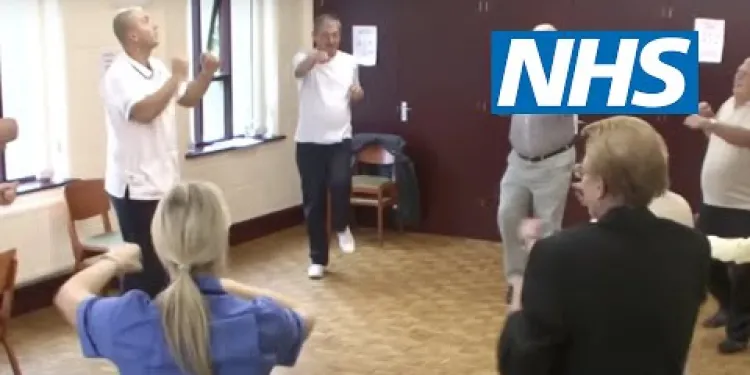
Pulmonary rehabilitation | NHS
Relevance: 32%
-

What is air physiotherapy?
Relevance: 31%
-

Is a prescription needed for air physiotherapy?
Relevance: 29%
-

Can air physiotherapy prevent respiratory infections?
Relevance: 28%
-

What equipment is used in air physiotherapy?
Relevance: 28%
-

Does air physiotherapy involve medication?
Relevance: 28%
-

Leg amputation and life afterwards
Relevance: 26%
-
Can air physiotherapy help with COVID-19 recovery?
Relevance: 26%
-
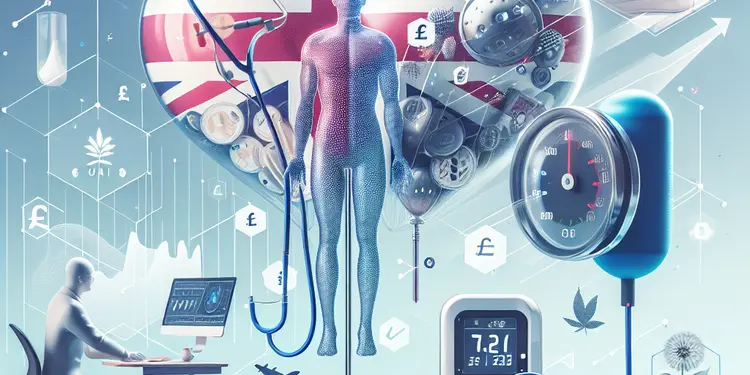
Who can benefit from air physiotherapy?
Relevance: 25%
-

What qualifications should a provider of air physiotherapy have?
Relevance: 25%
-

How does air physiotherapy work?
Relevance: 25%
-
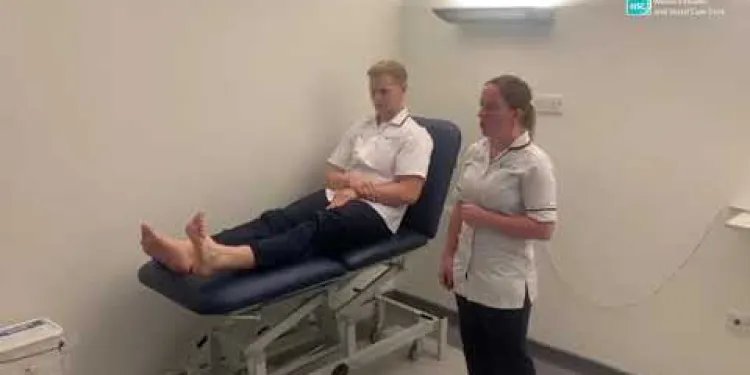
Physiotherapy Exercises following an Ankle Fracture
Relevance: 25%
-

Incontinence and Prolapse - Physiotherapy Advice
Relevance: 24%
-

Are there any exercises involved in air physiotherapy?
Relevance: 23%
-

How often should one perform air physiotherapy?
Relevance: 23%
-

Can air physiotherapy be done at home?
Relevance: 23%
-
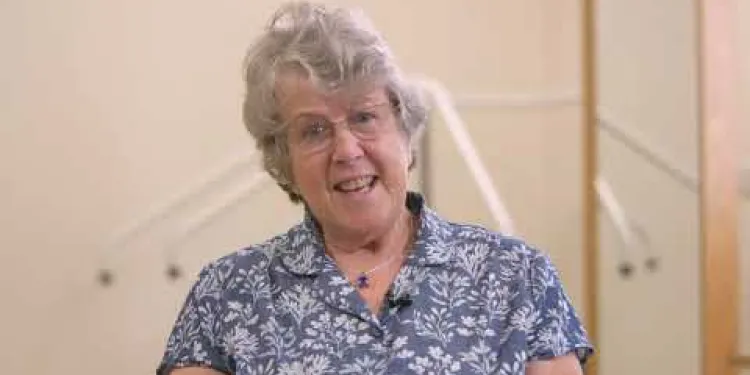
NHSGGC - Respiratory Physiotherapy Service: Self-Management
Relevance: 23%
-
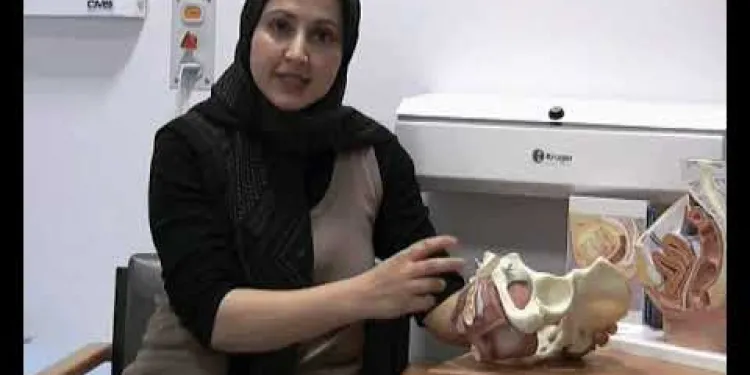
Physiotherapy Assessment of Urinary Incontinence
Relevance: 22%
-

What kinds of specialists are involved in treating Huntington's disease?
Relevance: 22%
-

Incontinence and Prolapse - Physiotherapy Advice
Relevance: 22%
-

Part One: Understanding Osteoarthritis- MSK Physiotherapy
Relevance: 19%
-

Newcastle Specialist Continence Service's Light Urinary Incontinence Project
Relevance: 19%
-

How does PEP therapy work in air physiotherapy?
Relevance: 17%
-

Jess Rann - Specialist Eating Disorders Dietitian
Relevance: 17%
-
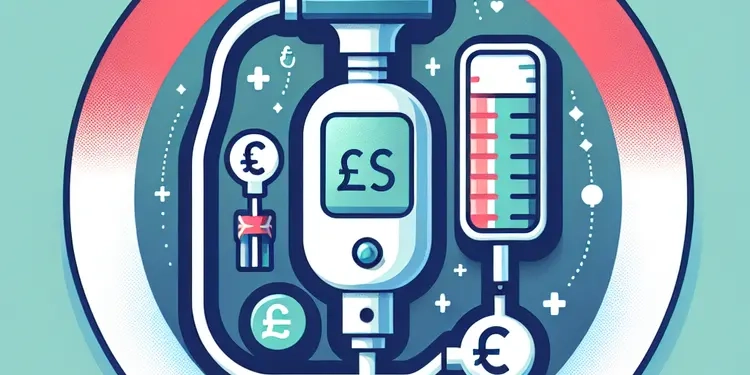
What is an incentive spirometer in air physiotherapy?
Relevance: 17%
-

Total Hip Replacement
Relevance: 16%
-

What innovations are there in mobility equipment technology?
Relevance: 16%
-

A journey to hip surgery
Relevance: 16%
-
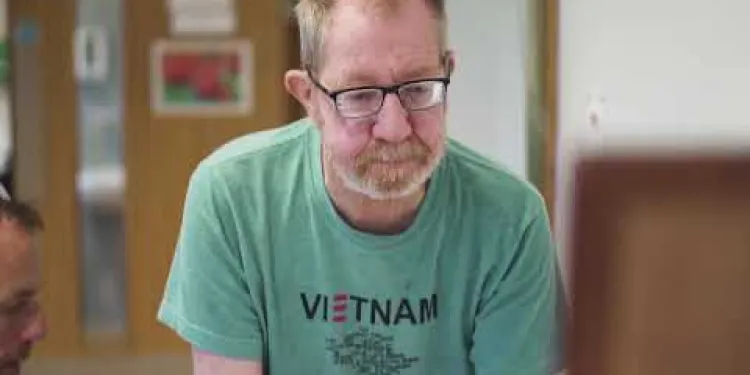
Vale Stroke Unit
Relevance: 16%
-

Are there specialists who can help with mis-sold car finance claims?
Relevance: 15%
-

Is air physiotherapy different from traditional physiotherapy?
Relevance: 14%
-
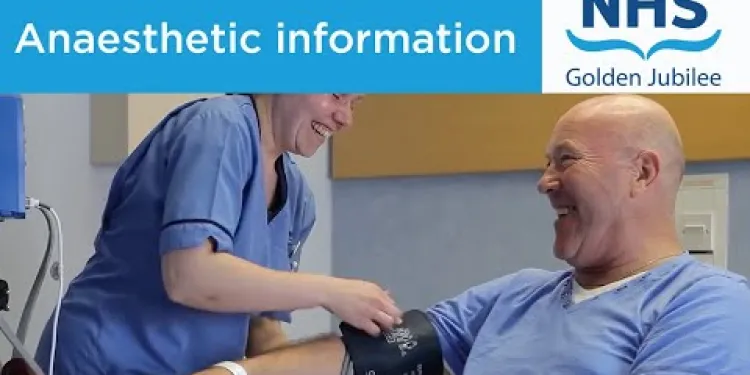
Knee replacement
Relevance: 13%
-
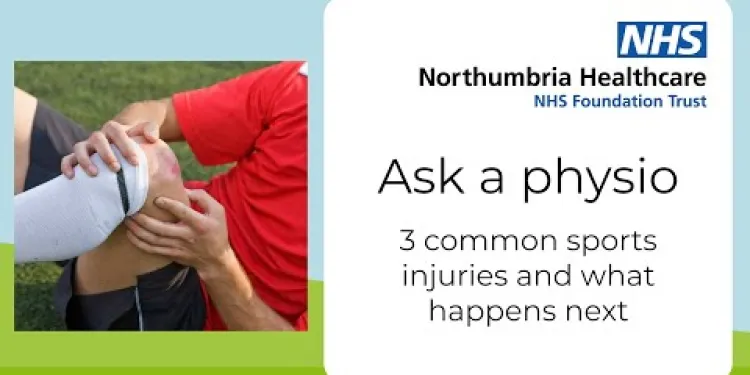
Ask a physio: 3 common sports injuries and what happens next
Relevance: 13%
-
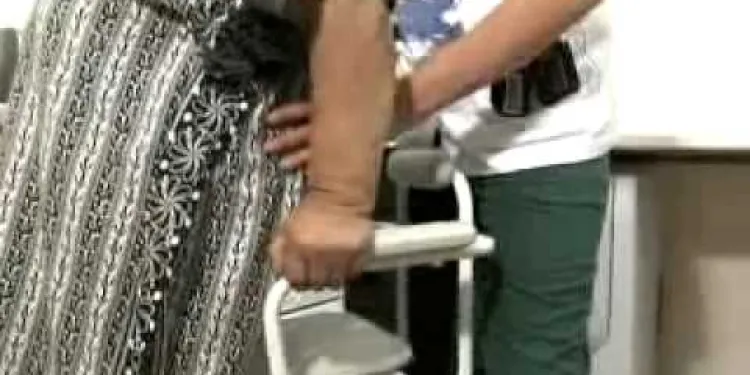
Total knee replacement
Relevance: 13%
-

NHS Here for You – Stroke
Relevance: 13%
-

Labyrinthitis and Vertigo (BPPV): Hazel's story | NHS
Relevance: 12%
-

Advice on sports injuries
Relevance: 12%
-

ACL exercises post-operation
Relevance: 12%
-
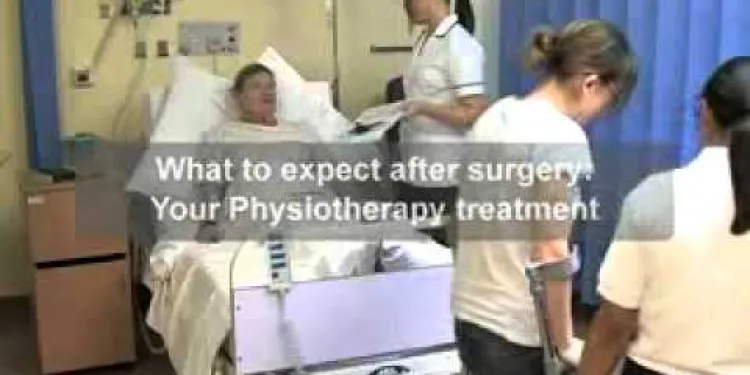
Total hip replacement
Relevance: 12%
The Leeds Specialist Rehabilitation Centre - Prosthetic Physiotherapy
Overview
The Leeds Specialist Rehabilitation Centre is renowned for its comprehensive and dedicated approach to prosthetic physiotherapy. The centre serves to provide extraordinary support and rehabilitation services to individuals in need of prosthetics across the United Kingdom. Our state-of-the-art facilities and experienced professionals ensure top-quality care and support to enhance the quality of life for prosthetic users.
Personalised Treatment Plans
Understanding that every individual's needs are unique, the Leeds Specialist Rehabilitation Centre offers personalised treatment plans. These plans are meticulously designed by a team of skilled physiotherapists, keeping in mind the patient's specific requirements and rehabilitation goals. Each plan focuses on improving mobility, strength, and functionality, enabling patients to regain independence and confidence in their daily lives.
Advanced Prosthetic Technology
Embracing innovation, the centre utilises cutting-edge prosthetic technology to aid rehabilitation. Patients have access to the latest prosthetic limbs and tools that are designed for optimum performance and comfort. Our team of experts is proficient in the latest advancements in prosthetics, ensuring that everyone receives the best possible equipment to aid their recovery and daily functions.
Comprehensive Rehabilitation Services
Aside from prosthetic physiotherapy, the Leeds Specialist Rehabilitation Centre offers a full spectrum of rehabilitation services. These include occupational therapy, psychological support, and speech and language therapy, providing holistic care under one roof. This multi-disciplinary approach ensures that all aspects of the patient's recovery are addressed, promoting overall well-being and quicker recovery times.
Support and Education
The centre is committed to offering continuous support and education to both patients and their families. Regular workshops and training sessions are conducted to inform and educate on the effective use and maintenance of prosthetics, as well as strategies for coping with the physical and emotional challenges that come with prosthetic use. By empowering patients and their families, the centre aims to foster a supportive community that thrives together.
Accessibility and Outreach
Located in Leeds, the rehabilitation centre is easily accessible to residents across the United Kingdom. Additionally, outreach programs ensure that even those who cannot travel to the centre receive the necessary care and support. Home visits, remote consultations, and telehealth services are available to bridge the gap and provide uninterrupted care to all who need it.
Conclusion
The Leeds Specialist Rehabilitation Centre is a beacon of hope and support for prosthetic users across the United Kingdom. With its personalised treatment plans, advanced technology, comprehensive services, and unwavering support, the centre is dedicated to improving the lives of its patients, enabling them to achieve their full potential.
The Leeds Specialist Rehabilitation Centre - Prosthetic Physiotherapy
Overview
The Leeds Specialist Rehabilitation Centre helps people who need prosthetics. Prosthetics are like artificial limbs or body parts. The centre has lots of new equipment to help people. Skilled staff work hard to make sure everyone gets the best care. This helps people have a better life with their prosthetics.
Personalised Treatment Plans
Everyone is different, so the centre makes special plans for each person. These are called personalised treatment plans. The plans help with moving better and getting stronger. This helps people feel more confident and do more things on their own.
Advanced Prosthetic Technology
The centre uses the latest technology for prosthetics. This means they have new, high-tech artificial limbs that work really well. Experts help choose the best prosthetics for each person. This makes sure everyone gets the right tools they need.
Comprehensive Rehabilitation Services
Besides helping with prosthetics, the centre offers other services too. These include help with daily activities, talking, and feeling better inside. All these services work together to help you get better faster.
Support and Education
The centre supports both patients and their families. There are workshops and training sessions. They teach how to use and take care of prosthetics. You can also learn how to handle feelings and challenges that come with using prosthetics. This information helps everyone feel a part of a caring community.
Accessibility and Outreach
The centre is in Leeds, but it helps people all over the UK. Even if you can't come to the centre, there are ways to get care. They offer home visits and online help so no one is left out. This means everyone can get the help they need.
Conclusion
The Leeds Specialist Rehabilitation Centre gives hope to people using prosthetics in the UK. They have special plans, new technology, and lots of services. They always support their patients, helping them live their best lives.
Frequently Asked Questions
What services does the Leeds Specialist Rehabilitation Centre provide?
The Leeds Specialist Rehabilitation Centre offers a range of services including prosthetic physiotherapy, orthotic services, wheelchair assessments, and specialist rehabilitation for patients with complex needs.
Who is eligible for prosthetic physiotherapy at the Leeds Specialist Rehabilitation Centre?
Individuals who have undergone amputations and are referred by their GP or specialist healthcare provider are eligible for prosthetic physiotherapy at the Centre.
What is prosthetic physiotherapy?
Prosthetic physiotherapy involves physical therapy tailored to individuals with prosthetic limbs to help them improve mobility, strength, and functional independence.
How can I get a referral for prosthetic physiotherapy?
You can obtain a referral through your GP or a specialist healthcare provider who will assess your need for prosthetic physiotherapy.
What can I expect during my first appointment?
During your first appointment, you will undergo a comprehensive assessment by a physiotherapist to develop a personalised treatment plan tailored to your specific needs.
How long does a typical prosthetic physiotherapy session last?
A typical prosthetic physiotherapy session lasts between 45 minutes to an hour, depending on your individual needs and therapy goals.
Are there any costs associated with the services at the Centre?
Prosthetic physiotherapy services are typically covered by the NHS. However, it's best to check with the Centre or your healthcare provider for specific details.
What should I bring to my physiotherapy sessions?
You should bring comfortable clothing, your prosthetic limb, any assistive devices you use, and any relevant medical records or referral letters.
How often will I need to attend physiotherapy sessions?
The frequency of your sessions will be determined by your physiotherapist based on your individual progress and rehabilitation goals. This can range from multiple times a week to monthly check-ins.
Can family members or carers attend the sessions with me?
Yes, family members or carers are welcome to attend your sessions to support you and learn how to assist with your rehabilitation exercises at home.
What types of exercises will I do in prosthetic physiotherapy?
Exercises will vary depending on your specific needs but may include strength training, balance exercises, mobility drills, and functional activities to improve your prosthetic use.
Will the Centre provide me with a prosthetic limb?
The Centre collaborates with specialist prosthetic providers. While they don’t directly supply prosthetics, they work closely with you and the provider to ensure the prosthetic meets your needs.
What should I do if I feel pain or discomfort with my prosthetic limb?
Contact your physiotherapist or prosthetist immediately if you experience pain or discomfort. They can assess and make necessary adjustments to your prosthetic limb.
How can I prepare for my physiotherapy sessions?
Stay hydrated, wear comfortable clothing, and follow any specific instructions provided by your physiotherapist. Being well-rested can also help you make the most out of your sessions.
Is parking available at the Leeds Specialist Rehabilitation Centre?
Yes, parking is available at the Centre for patients and visitors. Specific details about parking can be obtained by contacting the Centre directly.
What help does the Leeds Specialist Rehabilitation Centre give?
The Leeds Specialist Rehabilitation Centre helps people get better and stronger.
If you need extra support to read, you can:
- Ask someone to read the information to you.
- Use a ruler or your finger to guide you as you read.
- Take your time and read slowly.
The Leeds Special Rehab Centre helps people in different ways. They help people learn to use artificial limbs. They make special braces to help people walk or move better. They check if you need a wheelchair and find the right one for you. They help people with big health problems get better.
If reading is hard, you can try using a ruler or your finger to follow the words. You can also try reading with someone who can help you. Listening to the text being read aloud can also be very helpful.
Who can get help with prosthetic exercises at the Leeds Specialist Rehab Centre?
If you have had an arm or leg removed and your doctor says you should come, you can get help with physiotherapy for your new arm or leg at the Centre.
What is prosthetic physiotherapy?
Prosthetic physiotherapy helps people who have a new body part, like a new arm or leg. These new parts are called prosthetics.
Physiotherapy is like special exercise time. It helps people learn how to use their new body parts. Physiotherapists are the people who help with this. They show how to move and use muscles so the new parts work well.
Here are some helpful tips if you are learning about prosthetic physiotherapy:
- Take small steps: Practice little by little every day.
- Ask for help: It's okay to ask a physiotherapist if you don’t understand something.
- Stay positive: Remember that getting better takes time.
Prosthetic physiotherapy is special exercises and activities for people who have artificial arms or legs. This helps them move better, get stronger, and do things by themselves.
How can I get help to see a physio for my prosthetic?
You can ask your doctor or a special health care person to help you get a referral. This will help you see if you need special exercises with prosthetic physiotherapy.
What will happen at my first visit?
When you go to your first appointment, here is what you might see:
- You will meet some friendly people who will help you.
- They might ask you some questions about how you feel.
- You can ask any questions you have too.
- They will explain what will happen next.
Here are some tips to help you:
- You can bring a friend or family member if you want.
- It might help to write down any questions you have before you go.
- Remember, it’s okay to be nervous. Everyone is there to help you.
At your first visit, a physiotherapist will check how your body moves. This helps them make a plan just for you to help you feel better.
How long is a prosthetic physiotherapy session?
A prosthetic physiotherapy session helps people learn to use an artificial arm or leg. Usually, the session lasts about 30 to 60 minutes. A therapist works closely with the person. They do exercises and learn new skills. Here are some tips to help everyone understand better: - Use pictures to show the steps. - Ask the therapist to explain things slowly. - Write down or record important information to look at later.A therapy session with an artificial limb helper usually lasts 45 minutes to an hour. This depends on what you need and what you want to achieve with your therapy.
Do you have to pay for help at the Centre?
The NHS usually pays for physiotherapy help if you have a prosthetic. It's a good idea to ask at the Centre or talk to your doctor to find out more.
What do I need to bring to my physiotherapy visits?
Here is a simple list of things to bring:
- Wear comfortable clothes that you can move in.
- Bring any paperwork or health records you have.
- A list of any questions you want to ask your therapist.
- Your health insurance card, if you have one.
Some helpful things to remember:
- Ask a friend or family member to come with you if you need help.
- Use a notebook to write down what the therapist tells you.
- You can take a bottle of water to stay hydrated.
You should bring comfy clothes, your special leg or arm, any helpful tools you use, and important papers from your doctor.
How many times will I need to go to physiotherapy?
You might ask your physiotherapist about how many sessions you need. A physiotherapist is a special doctor who helps you get better after an injury.
Some tips to help:
- Use a calendar to write down your sessions.
- Ask a friend or family member to remind you.
Your physiotherapist will decide how often you need sessions. This will depend on how well you are doing and what goals you have for getting better. You might need sessions many times a week, or maybe just once a month.
Can my family or helpers come with me to the sessions?
Yes, your family or carers can come to your sessions. They can help you and learn how to do your exercises at home.
What exercises will I do in prosthetic physiotherapy?
In prosthetic physiotherapy, you will do different exercises to help you move better. These exercises can make your body strong and help you learn how to use your prosthetic leg or arm.
Types of exercises you might do:
- Stretching: To make your muscles loose and help them move easily.
- Strength exercises: To make your body strong, so you can use your prosthetic better.
- Balance exercises: To help you stand up and not fall over.
- Walking practice: To learn how to walk with your prosthetic leg.
- Arm movements: To practice using your prosthetic arm.
Helpful tips:
- Go slow and take your time. It’s okay to ask for help.
- If it hurts, tell the therapist. They can help you feel better.
- You can use videos or pictures to learn the exercises.
What exercises you do will be different for each person. They might include strength exercises to make your muscles strong, balance exercises to help you stay steady, mobility drills to get your body moving, and activities to help you use your prosthetic better.
Can the Centre give me a new artificial arm or leg?
If you need help getting a new arm or leg, talk to the people at the Centre. They can tell you what they can do to help.
If it feels tricky to understand, you can ask someone you trust to help read or explain it to you.
The Center works with special companies that make new arms and legs. They don't give you the new arm or leg themselves, but they help you and the company. This makes sure the new arm or leg is just right for you.
What to do if my new leg or arm hurts?
If your new leg or arm feels sore or uncomfortable:
- Tell your doctor or nurse.
- Take off your new leg or arm and rest.
- Check if there are any red areas on your skin.
- Use soft pads or socks to make it feel better.
- Make sure your new leg or arm fits right.
You can ask someone to help you, like a friend, family member, or carer.
If you feel pain or it hurts when using your new leg or arm, tell your helper right away. They can check it and make it feel better for you.
Getting Ready for Your Physiotherapy Sessions
Here is how you can get ready for your physiotherapy visits:
- Wear comfortable clothes. This will help you move easily.
- Bring any papers or notes you have about your injury or pain.
- Think about what hurts or feels wrong. Tell this to your therapist.
- Write down any questions you have, like "What exercises will I do?"
- Ask someone to come with you if you want help or support.
Using a notebook or drawing pictures can help you remember things to say or ask during your session.
Drink water, wear comfy clothes, and listen to what your physiotherapist says. Being well-rested can also help you get the most from your sessions.
Can I park my car at the Leeds Specialist Rehabilitation Centre?
Yes, you can park your car here. If you need help, ask someone for directions.
Yes, you can park at the Centre if you are a patient or a visitor. If you need more information about parking, you can ask the Centre staff for help.
Useful Links
- Ergsy carfully checks the information in the videos we provide here.
- Videos shown by Youtube after a video has completed, have NOT been reviewed by ERGSY.
- To view, click the arrow in centre of video.
- Most of the videos you find here will have subtitles and/or closed captions available.
- You may need to turn these on, and choose your preferred language.
- Go to the video you'd like to watch.
- If closed captions (CC) are available, settings will be visible on the bottom right of the video player.
- To turn on Captions, click settings .
- To turn off Captions, click settings again.
More Items From Ergsy search
-

The Leeds Specialist Rehabilitation Centre - 3 Prosthetic Physiotherapy
Relevance: 100%
-

Pulmonary rehabilitation | NHS
Relevance: 32%
-

What is air physiotherapy?
Relevance: 31%
-

Is a prescription needed for air physiotherapy?
Relevance: 29%
-

Can air physiotherapy prevent respiratory infections?
Relevance: 28%
-

What equipment is used in air physiotherapy?
Relevance: 28%
-

Does air physiotherapy involve medication?
Relevance: 28%
-

Leg amputation and life afterwards
Relevance: 26%
-
Can air physiotherapy help with COVID-19 recovery?
Relevance: 26%
-

Who can benefit from air physiotherapy?
Relevance: 25%
-

What qualifications should a provider of air physiotherapy have?
Relevance: 25%
-

How does air physiotherapy work?
Relevance: 25%
-

Physiotherapy Exercises following an Ankle Fracture
Relevance: 25%
-

Incontinence and Prolapse - Physiotherapy Advice
Relevance: 24%
-

Are there any exercises involved in air physiotherapy?
Relevance: 23%
-

How often should one perform air physiotherapy?
Relevance: 23%
-

Can air physiotherapy be done at home?
Relevance: 23%
-

NHSGGC - Respiratory Physiotherapy Service: Self-Management
Relevance: 23%
-

Physiotherapy Assessment of Urinary Incontinence
Relevance: 22%
-

What kinds of specialists are involved in treating Huntington's disease?
Relevance: 22%
-

Incontinence and Prolapse - Physiotherapy Advice
Relevance: 22%
-

Part One: Understanding Osteoarthritis- MSK Physiotherapy
Relevance: 19%
-

Newcastle Specialist Continence Service's Light Urinary Incontinence Project
Relevance: 19%
-

How does PEP therapy work in air physiotherapy?
Relevance: 17%
-

Jess Rann - Specialist Eating Disorders Dietitian
Relevance: 17%
-

What is an incentive spirometer in air physiotherapy?
Relevance: 17%
-

Total Hip Replacement
Relevance: 16%
-

What innovations are there in mobility equipment technology?
Relevance: 16%
-

A journey to hip surgery
Relevance: 16%
-

Vale Stroke Unit
Relevance: 16%
-

Are there specialists who can help with mis-sold car finance claims?
Relevance: 15%
-

Is air physiotherapy different from traditional physiotherapy?
Relevance: 14%
-

Knee replacement
Relevance: 13%
-

Ask a physio: 3 common sports injuries and what happens next
Relevance: 13%
-

Total knee replacement
Relevance: 13%
-

NHS Here for You – Stroke
Relevance: 13%
-

Labyrinthitis and Vertigo (BPPV): Hazel's story | NHS
Relevance: 12%
-

Advice on sports injuries
Relevance: 12%
-

ACL exercises post-operation
Relevance: 12%
-

Total hip replacement
Relevance: 12%


